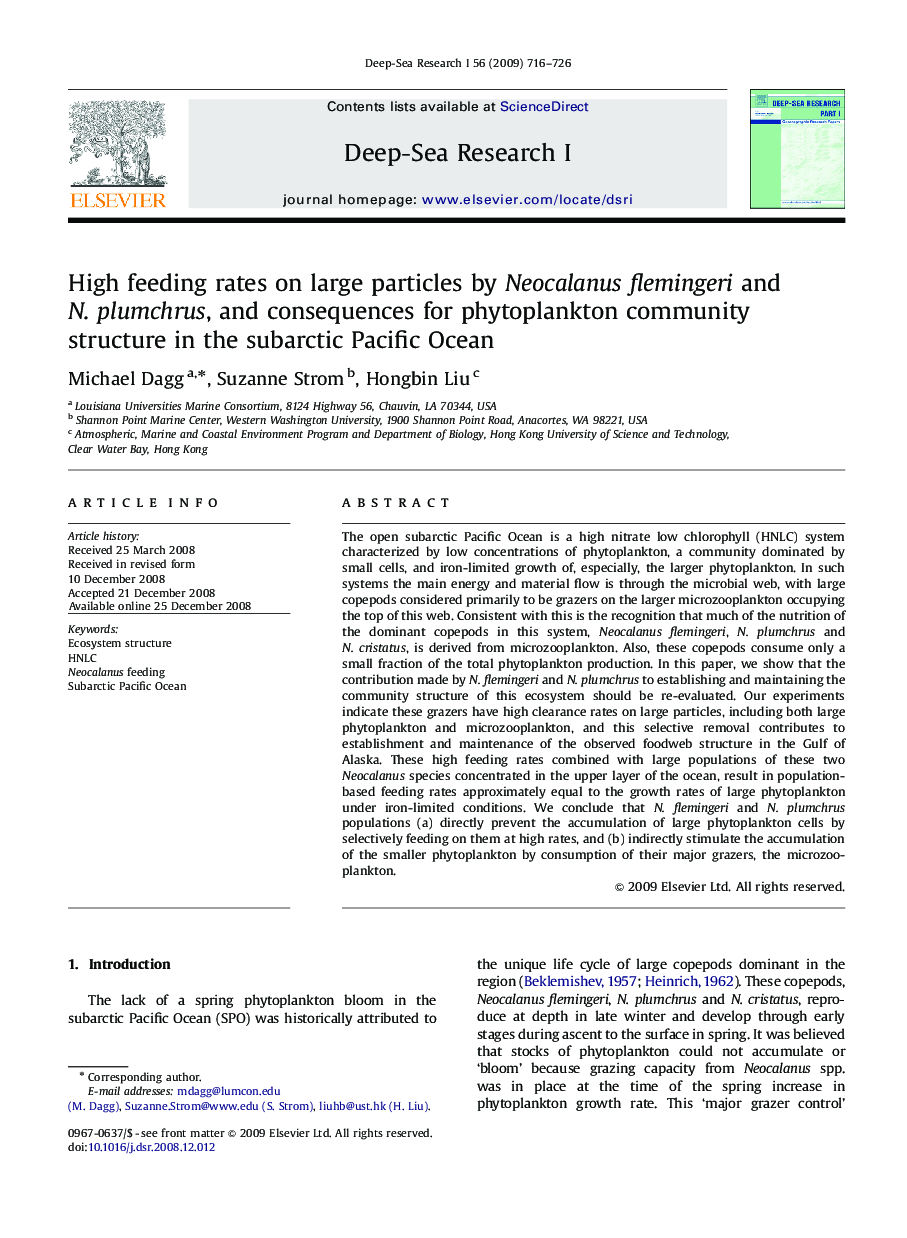| Article ID | Journal | Published Year | Pages | File Type |
|---|---|---|---|---|
| 4535036 | Deep Sea Research Part I: Oceanographic Research Papers | 2009 | 11 Pages |
The open subarctic Pacific Ocean is a high nitrate low chlorophyll (HNLC) system characterized by low concentrations of phytoplankton, a community dominated by small cells, and iron-limited growth of, especially, the larger phytoplankton. In such systems the main energy and material flow is through the microbial web, with large copepods considered primarily to be grazers on the larger microzooplankton occupying the top of this web. Consistent with this is the recognition that much of the nutrition of the dominant copepods in this system, Neocalanus flemingeri, N. plumchrus and N. cristatus, is derived from microzooplankton. Also, these copepods consume only a small fraction of the total phytoplankton production. In this paper, we show that the contribution made by N. flemingeri and N. plumchrus to establishing and maintaining the community structure of this ecosystem should be re-evaluated. Our experiments indicate these grazers have high clearance rates on large particles, including both large phytoplankton and microzooplankton, and this selective removal contributes to establishment and maintenance of the observed foodweb structure in the Gulf of Alaska. These high feeding rates combined with large populations of these two Neocalanus species concentrated in the upper layer of the ocean, result in population-based feeding rates approximately equal to the growth rates of large phytoplankton under iron-limited conditions. We conclude that N. flemingeri and N. plumchrus populations (a) directly prevent the accumulation of large phytoplankton cells by selectively feeding on them at high rates, and (b) indirectly stimulate the accumulation of the smaller phytoplankton by consumption of their major grazers, the microzooplankton.
